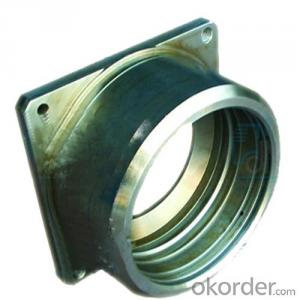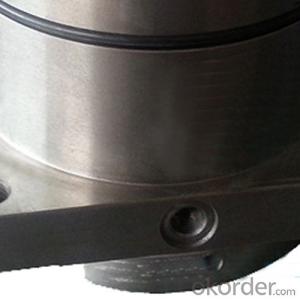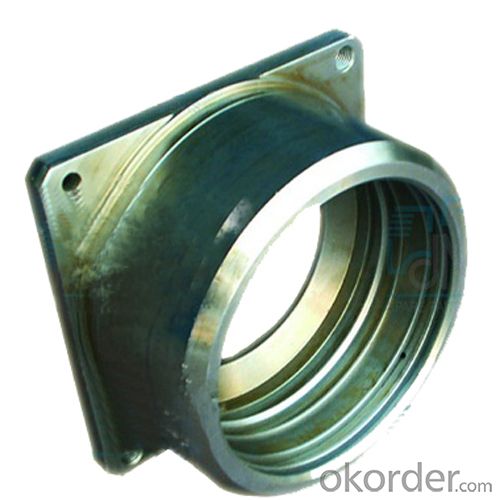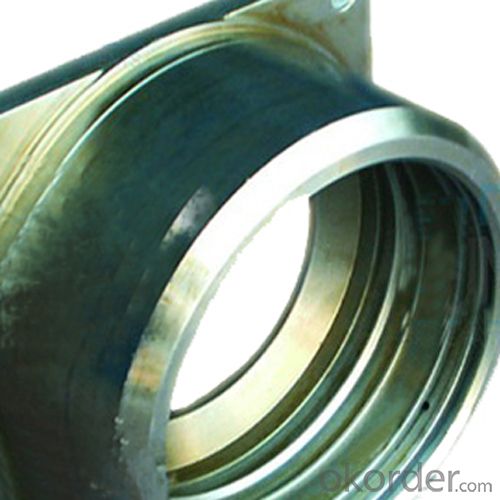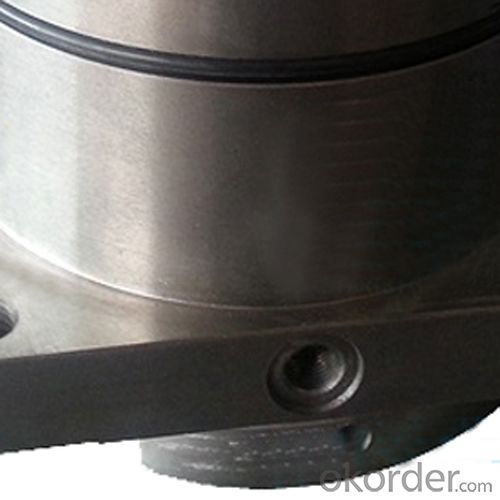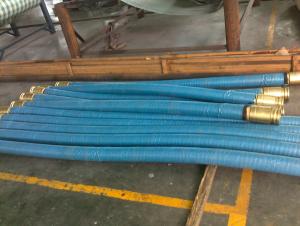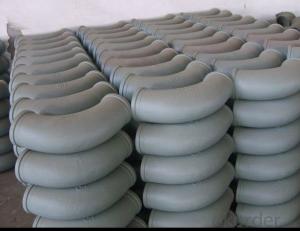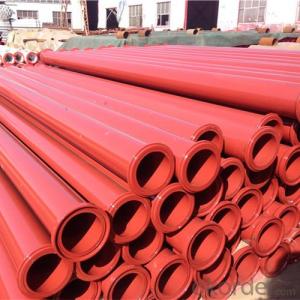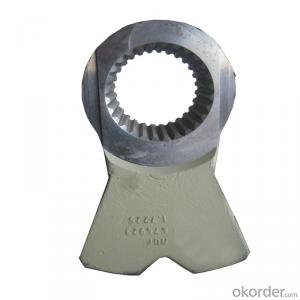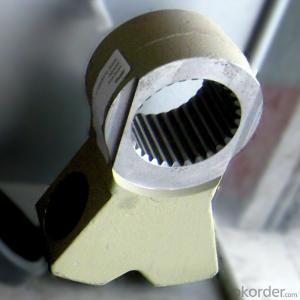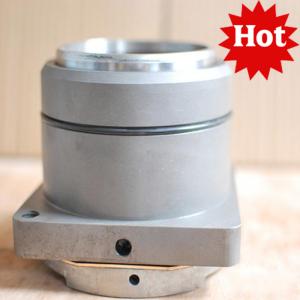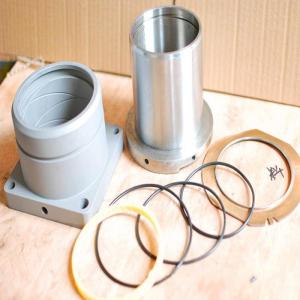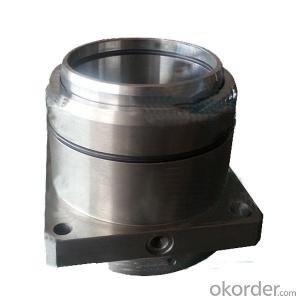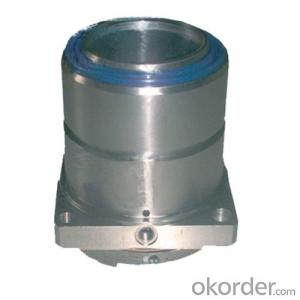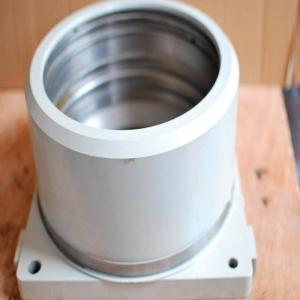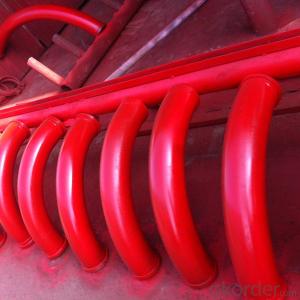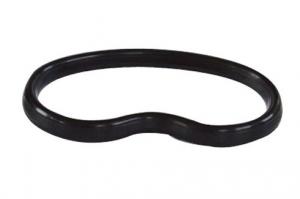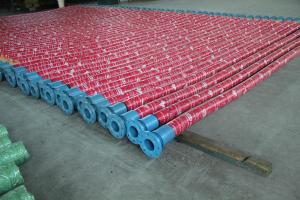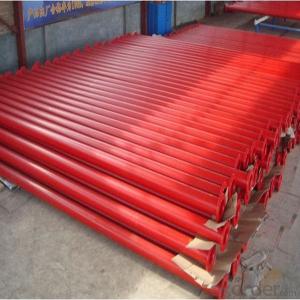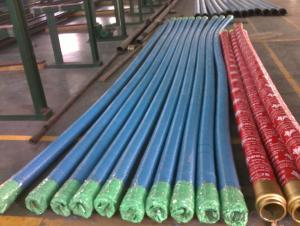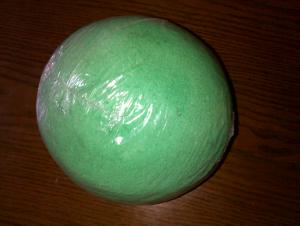Concrete Pumps Spare Parts Outer Housing
- Loading Port:
- Tianjin
- Payment Terms:
- TT OR LC
- Min Order Qty:
- 1 pc
- Supply Capability:
- 1000 pc/month
OKorder Service Pledge
OKorder Financial Service
You Might Also Like
Product Description:
The Concrete Pumps Spare Parts Complete Outer Housing normally made by special steel materials, according to customer’s requests, and also package in plywood box and put into container.
Scope of Application of the pipes
The Concrete Pumps Spare Parts Outer Housing is a concrete pumps parts for combined use with other concrete parts in for concrete pumps and truck pumps. It can be widely used in the construction of various types of concrete structures like industrial and civil buildings, bridges, roads, and other types of infrastructure.
This pipes can only be used in concrete construction operations, but not in any other operations, like dragging, moving, or hoisting heavy articles or personnel. The pipe is also not allowed to be used in any location where any combustible or explosive material exists or a cave-in may occur.
Product Advantages:
OKorder's Concrete Pumps Spare Parts Outer Housing Channels are durable, strong, and safety.
Main Product Features:
· Premium quality
· Prompt delivery & seaworthy packing (5-10 days)
Reliable performance
Easy to weld
High safety.
· Professional Service
· Competitive pricing
Measuring of wall thickness from the outside
Low purchase cost
Specifications:
CNBM No. | 2000024 |
Original No. | 240391003 |
Description | Outer Housing |
Remark |
FAQ:
Q1: How long about delivery time Concrete Pumps Spare parts Outer Housing ?
A1: Normally we keep the raw materials for old customers and sometime we also keep stock products to make sure delivery time in any emergency cases.
Q2: How do we guarantee the quality of our Concrete Pumps Spare Parts Outer Housing ?
A2: We have established an advanced quality management system which conducts strict quality tests at every step, from raw materials to the final product. At the same time, we provide extensive follow-up service assurances as required.
Q3: How soon can we receive the product after purchase?
A3: Within three days of placing an order, we will book the vessel for goods. The specific shipping date is dependent upon international and government factors, but is typically 7 to 30 workdays.
Q4: If we can produce some Outer Housing according to customers request?
A4: Yes, we can produce Outer Housing according to the difference country situations to make it suitable to the market and customers. We have very professional technical team to make the design.
Q5: How to make a quick resolution for after service?
A5: OKorder and our manufacture both have overseas branches all-around of world.
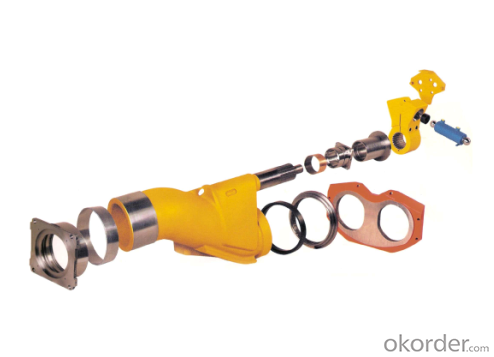
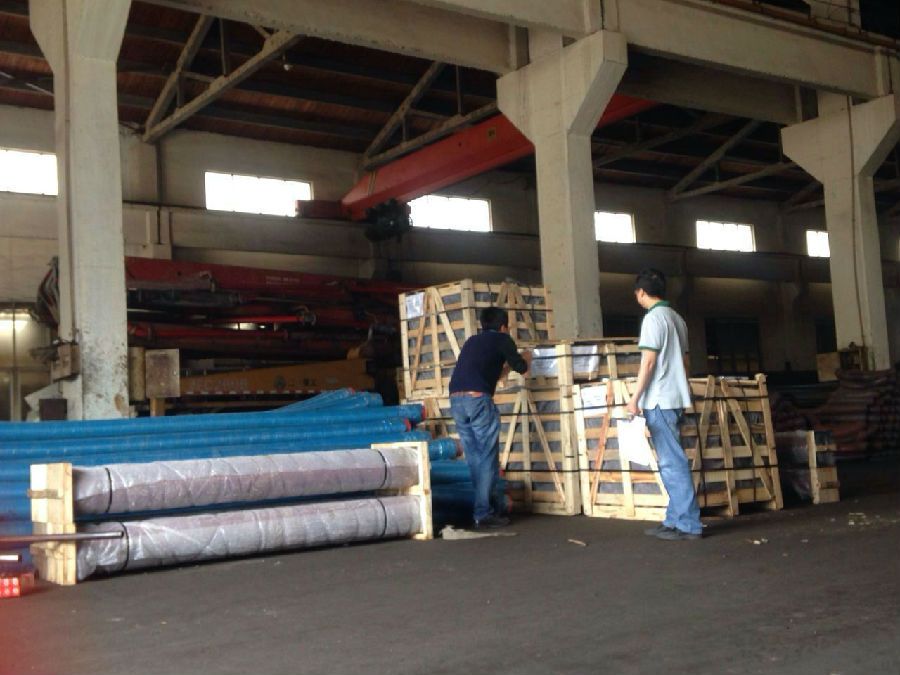
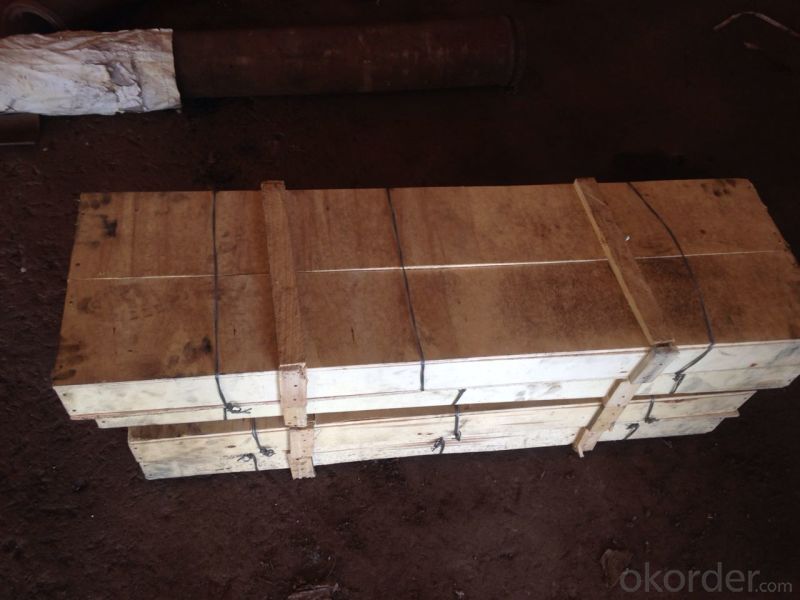
- Q: How long does it take to receive concrete pump spare parts after ordering?
- The time it takes to receive concrete pump spare parts after ordering can vary depending on various factors such as the supplier's location, shipping method chosen, and availability of the specific parts. It is recommended to contact the supplier directly for an estimated delivery timeline.
- Q: How often should hopper agitator shafts be inspected or replaced in a concrete pump?
- Hopper agitator shafts in a concrete pump should be regularly inspected and maintained to ensure optimal performance and prevent potential breakdowns. The frequency of inspection or replacement depends on several factors such as the usage and operating conditions of the pump. As a general guideline, it is recommended to inspect the hopper agitator shafts at least once every three to six months. During the inspection, the shafts should be checked for any signs of wear, damage, or misalignment. If any issues are detected, appropriate measures should be taken, such as lubrication, realignment, or replacement of damaged parts. However, it is important to note that the frequency of inspection may vary depending on the intensity of use, the type of materials being pumped, and the overall condition of the pump. For instance, if the pump is subjected to heavy-duty or continuous operation, it may be necessary to inspect the agitator shafts more frequently, such as on a monthly basis. Regular maintenance and inspection of hopper agitator shafts not only ensure the smooth operation of the concrete pump but also extend the lifespan of the equipment. Timely detection and resolution of any issues can prevent costly repairs or downtime in the future. Additionally, following the manufacturer's recommendations and guidelines for maintenance can help optimize the performance and reliability of the concrete pump.
- Q: How often should hopper pins be inspected or replaced in a concrete pump?
- Hopper pins in a concrete pump should be inspected regularly, preferably before each use, to ensure they are in proper working condition. The frequency of replacement will depend on various factors such as the quality of the pins, the intensity of use, and the maintenance practices employed. However, it is recommended to replace hopper pins as soon as any signs of wear, damage, or weakening are detected to prevent potential accidents or malfunctions.
- Q: How can a damaged concrete pump piston affect the pumping efficiency?
- The pumping efficiency can be significantly affected in various ways by a piston that is damaged. To begin with, reduced pumping capacity can result from decreased power and force exerted by the pump due to a damaged piston. The piston's responsibility is to generate the necessary pressure for pushing the concrete mixture through the pumping system. If it is damaged, it may fail to generate adequate pressure, leading to slower and less efficient pumping. In addition, leaks can occur within the pump system due to a damaged piston. The piston plays a critical role in sealing the concrete and preventing it from leaking back into the hopper. If it is damaged or worn out, a tight seal may not be created, resulting in leakage. This not only leads to material loss but also reduces pumping efficiency as the pump has to compensate for the loss by working harder. Moreover, blockages and clogs can be caused by a damaged piston in the pumping system. The movement of the piston creates suction, which pulls the concrete mixture into the pump. If the piston is damaged, it may not create sufficient suction, causing the mixture to flow unevenly or get stuck in the system. This can cause delays and interruptions in the pumping process, ultimately reducing overall efficiency. In conclusion, the pumping efficiency can be negatively impacted by a damaged concrete pump piston through reduced power and force, leaks, and blockages. It is crucial to regularly maintain and promptly repair or replace damaged pistons to ensure optimal pumping performance and efficiency.
- Q: How is a concrete pump pipe different from a regular pipe?
- A concrete pump pipe is specifically designed for pumping high-pressure concrete mixture from a concrete pump truck to the desired location. Unlike a regular pipe, a concrete pump pipe is made of high-quality and durable materials such as hardened steel or alloy, which can withstand the high pressures and abrasion caused by the concrete mixture. One key difference between a concrete pump pipe and a regular pipe is the thickness of the walls. Concrete pump pipes have thicker walls to ensure they can handle the high pressure and abrasive nature of the concrete mixture. Regular pipes, on the other hand, are designed for various purposes such as water or gas transportation and therefore may not have the same level of thickness and durability. Additionally, concrete pump pipes often come with different end connections, such as flanges or couplings, to allow for easy connection and disconnection to the concrete pump truck and other pipeline components. This ensures a secure and leak-free transfer of the concrete mixture. Furthermore, concrete pump pipes may also have special design features to enhance their performance and longevity. These features can include wear-resistant linings, heat treatment, or galvanization to prevent corrosion and extend the lifespan of the pipe. In summary, a concrete pump pipe differs from a regular pipe in terms of its materials, thickness, end connections, and design features. These differences enable concrete pump pipes to handle the unique requirements of pumping high-pressure concrete mixtures efficiently and effectively.
- Q: When concrete is poured, how high can the concrete pump be put?
- At present, the commonly used car pump, the length of the arm more than 30 meters to more than 40 meters, there are a small number of arms as long as more than 50 meters to more than 70 meters
- Q: Are there any specific safety precautions while replacing concrete pump spare parts?
- Yes, there are several safety precautions to consider while replacing concrete pump spare parts. Firstly, it is important to wear personal protective equipment such as gloves, safety glasses, and a dust mask to protect against potential hazards. Additionally, one should ensure the pump is turned off and disconnected from the power source before attempting any repairs. It is also crucial to follow proper lifting techniques and use appropriate tools to avoid injuries. Lastly, it is advisable to have a clear understanding of the equipment and its components, and if unsure, consult with a professional or refer to the manufacturer's guidelines for safe replacement procedures.
- Q: Can I get spare parts for concrete pump hoppers and agitators?
- Yes, it is possible to get spare parts for concrete pump hoppers and agitators. Many manufacturers and suppliers of concrete pumps and equipment offer spare parts for their products. You can contact the manufacturer or supplier of your specific concrete pump hopper or agitator to inquire about the availability and pricing of spare parts. Additionally, there are also specialized companies that provide spare parts for various brands and models of concrete pumps and equipment. These companies typically have a wide range of spare parts in stock and can ship them to you as needed.
- Q: Can a concrete pump pipe be repaired or should it be replaced?
- A concrete pump pipe can be repaired in some cases, but it ultimately depends on the extent of damage and the specific circumstances. Minor cracks or small sections of damage can often be repaired using specialized techniques such as welding or epoxy injections. However, if the damage is widespread, severe, or compromises the structural integrity of the pipe, it may be more cost-effective and safer to replace the entire pipe. It is important to assess the condition of the concrete pump pipe thoroughly before deciding whether to repair or replace it. Factors such as the age of the pipe, the overall condition of the pump, and the frequency of use should be taken into consideration. Consulting with a professional or an experienced concrete pump technician is advisable to determine the best course of action. In conclusion, while repairs can be made to a concrete pump pipe, the decision to repair or replace should be based on the extent of damage, cost-effectiveness, and safety considerations.
- Q: What is the second generation pumping technology of concrete pump?
- The hydraulic reversing technology is realized by reversing the hydraulic signals of the main cylinder and the small hydraulic cylinder.
Send your message to us
Concrete Pumps Spare Parts Outer Housing
- Loading Port:
- Tianjin
- Payment Terms:
- TT OR LC
- Min Order Qty:
- 1 pc
- Supply Capability:
- 1000 pc/month
OKorder Service Pledge
OKorder Financial Service
Similar products
Hot products
Hot Searches
Related keywords
